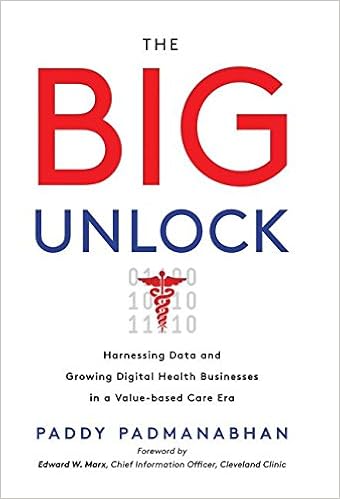Jan 5
2018
2018 Will Be the Year of Hypercompetition and Disruption In Healthcare Tech
Paddy Padmanabhan is the author of The Big Unlock: Harnessing Data and Growing Digital Health Businesses in a Value-Based Care Era and is CEO of Damo Consulting Inc.

The digitization of healthcare records across the nation over the past several years has created an electronic backbone for patient data that is in the early stages of getting unlocked for value. However, as we have seen in the past couple of years, technology-led change is slow to take hold in healthcare, and the policy uncertainty of the previous year has meant that healthcare enterprises have been cautious with technology investments.
 In my latest book “The Big Unlock,” I discuss the competitive forces within the healthcare technology provider landscape, which I have classified into four major categories: The custodians are the dominant electronic health record (EHR) vendors who have the data and the workflow. The enablers have built platforms that they hope will be used by the enterprises as well as other technology providers to develop new digital health experiences. The arbitrageurs are solutions and services firms that rely on global labor pools, and increased automation, to deliver technology-enabled services at lower costs. The innovators are developing new ways to provide healthcare experiences, and are often venture capital funded startups.
In my latest book “The Big Unlock,” I discuss the competitive forces within the healthcare technology provider landscape, which I have classified into four major categories: The custodians are the dominant electronic health record (EHR) vendors who have the data and the workflow. The enablers have built platforms that they hope will be used by the enterprises as well as other technology providers to develop new digital health experiences. The arbitrageurs are solutions and services firms that rely on global labor pools, and increased automation, to deliver technology-enabled services at lower costs. The innovators are developing new ways to provide healthcare experiences, and are often venture capital funded startups.
These categories are not watertight compartments, but indicate a dominant business model for a particular type of solution provider. Vendors in each of these groups face challenges related to organic growth within their space and competitive pressures from other incumbents as well as new entrants. In response, technology providers in a specific category are also trying to expand into different categories, examples being EHR vendors who are building out advanced analytics and digital capabilities. All incumbents face threats from emerging non-traditional sources of competition: Amazon, with its blockbuster Amazon Web Services (AWS) business, is reportedly considering an entry into the pharmaceuticals distribution space, while Apple is getting deeper into digital health space, leveraging its vast consumer base of iPhone and Apple Watch users. Large healthcare enterprises, such as UPMC and Quest Diagnostics, are getting into the technology solutions space, either by leveraging proprietary data or by investing in startups through innovation programs. Health plan major Cigna’s recent acquisition of digital health firm Brighter is an example of the lines blurring between technology providers and enterprises.